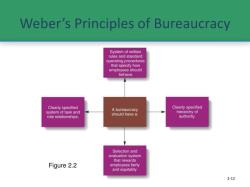How do I develop an ethics training program for employees?
Developing an effective ethics training program for employees involves careful planning, consideration of organizational values, and addressing relevant ethical issues. Here's a step-by-step guide to help you create a comprehensive ethics training program:
Step 1: Define Objectives and Goals
Identify Training Objectives:
- Determine the specific objectives and goals of the ethics training program. What skills, knowledge, or behaviors do you want employees to develop or enhance?
Align with Organizational Values:
- Ensure that the training aligns with the organization's core values and ethical standards. Consider how ethical behavior supports the overall mission and goals.
Step 2: Conduct a Needs Assessment
Identify Ethical Risks:
- Conduct a needs assessment to identify areas of ethical risk within the organization. Consider past incidents, industry-specific challenges, and emerging ethical issues.
Survey Employees:
- Gather input from employees through surveys or focus groups to understand their perceptions of ethical challenges and areas where training is needed.
Step 3: Develop Content and Materials
Cover Relevant Topics:
- Develop content that covers a range of relevant ethical topics, such as conflict of interest, bribery and corruption, discrimination, data privacy, and integrity.
Real-Life Scenarios:
- Include real-life scenarios and case studies that employees can relate to. This helps in applying ethical principles to practical situations.
Interactive Elements:
- Incorporate interactive elements, such as group discussions, role-playing, and scenario-based exercises, to engage employees actively in the learning process.
Step 4: Customize Training Materials
Tailor to Organizational Context:
- Customize training materials to reflect the specific context of your organization. Use examples and case studies that resonate with employees in your industry.
Incorporate Company Policies:
- Integrate information about company policies and procedures related to ethics. Ensure employees understand how to access and apply these policies.
Step 5: Choose Training Methods
In-Person Workshops:
- Conduct in-person workshops or seminars facilitated by experts in ethics and compliance.
Online Training Modules:
- Utilize online training modules for flexibility and scalability. This is especially useful for remote or widely dispersed teams.
Guest Speakers:
- Invite guest speakers, such as ethicists, legal experts, or industry leaders, to share insights and perspectives.
Step 6: Establish a Training Schedule
Frequency:
- Determine the frequency of ethics training. Consider whether it will be an annual, bi-annual, or ongoing program.
Integration with Onboarding:
- Integrate ethics training into the onboarding process for new employees. This ensures that ethical considerations are introduced early in their tenure.
Step 7: Engage Leadership Support
Leadership Commitment:
- Gain commitment and support from top leadership. Leaders should actively promote the importance of ethics training and lead by example.
Incorporate Leadership Training:
- Include a specific module on ethical leadership, emphasizing the role leaders play in fostering an ethical culture.
Step 8: Evaluate and Measure Effectiveness
Assessment Tools:
- Develop assessment tools, such as quizzes or surveys, to measure the effectiveness of the training program.
Feedback Mechanisms:
- Establish feedback mechanisms for participants to share their thoughts on the training content, format, and delivery.
Step 9: Continuous Improvement
Review and Update:
- Regularly review and update the training program to address emerging ethical challenges and incorporate feedback.
Benchmarking:
- Benchmark your program against industry best practices and standards to ensure it remains relevant and effective.
Step 10: Communication and Promotion
Communicate Expectations:
- Clearly communicate the expectations for participation in the ethics training program to all employees.
Promote a Positive Culture:
- Emphasize that ethics training is part of creating a positive and ethical organizational culture. Encourage employees to see it as an opportunity for personal and professional growth.
By following these steps, you can create an ethics training program that not only meets compliance requirements but also fosters a culture of integrity, responsibility, and ethical decision-making within your organization.
What steps or strategies are involved in creating an effective ethics training program tailored for employees?
Creating an effective ethics training program for employees requires careful planning and consideration to ensure the content is relevant, engaging, and impactful. Here are some key steps and strategies involved:
1. Define your goals and objectives:
- What do you want your employees to learn and be able to do after the training?
- Do you aim to raise awareness of specific ethical issues, improve decision-making skills, or foster a culture of ethical behavior?
2. Assess your audience and needs:
- Consider the size and diversity of your workforce.
- What are the typical ethical challenges they face in their daily work?
- What level of knowledge and understanding of ethics do they already possess?
3. Choose the right content and format:
- Tailor the content to address the specific ethical challenges relevant to your organization and industry.
- Use a variety of formats to keep the training engaging, such as interactive exercises, case studies, simulations, role-playing, and group discussions.
- Balance theoretical concepts with practical applications to real-world situations.
4. Use storytelling and case studies:
- People learn best through relatable stories and examples. Use real or fictional scenarios to illustrate ethical dilemmas and explore different decision-making approaches.
- Encourage discussion and analysis of these cases to develop critical thinking and problem-solving skills.
5. Promote active learning and participation:
- Encourage questions, discussions, and open communication.
- Use activities and exercises that require employees to apply ethical principles to practical situations.
- Provide opportunities for peer feedback and collaboration.
6. Integrate ethics into the workplace culture:
- Reinforce ethical values through company policies, codes of conduct, and performance evaluations.
- Encourage open communication and reporting of ethical concerns.
- Recognize and reward employees who demonstrate ethical behavior.
Additional Strategies:
- Involve leadership: Show commitment to ethical conduct by having leaders actively participate in the training and model ethical behavior in their daily work.
- Utilize technology: Use online learning platforms and simulations to make the training accessible and engaging.
- Offer ongoing training and support: Ethics training should be a continuous process, not a one-time event. Offer refresher courses, workshops, and resources to reinforce ethical values and address emerging challenges.
- Measure the impact: Evaluate the effectiveness of your training program through surveys, feedback sessions, and observation of employee behavior.
Remember, creating an effective ethics training program requires a comprehensive approach that addresses both the cognitive and behavioral aspects of ethical decision-making. By tailoring the content, incorporating engaging learning methods, and fostering a culture of ethical conduct, you can empower your employees to make the right choices in challenging situations.
I hope this information helps you in your efforts to create a successful ethics training program for your employees. Feel free to ask if you have any further questions about specific aspects of the process or need more resources on a particular ethical topic.











